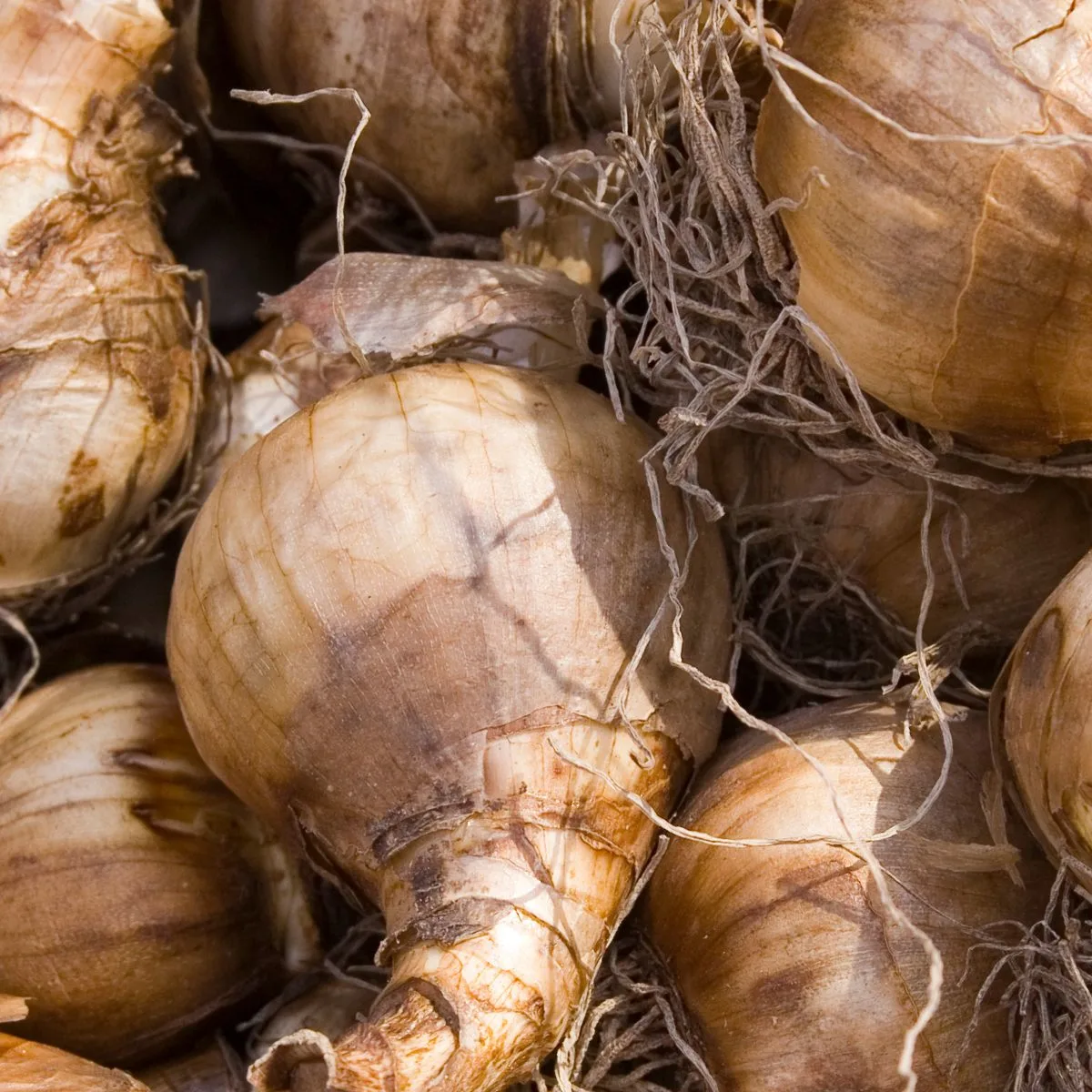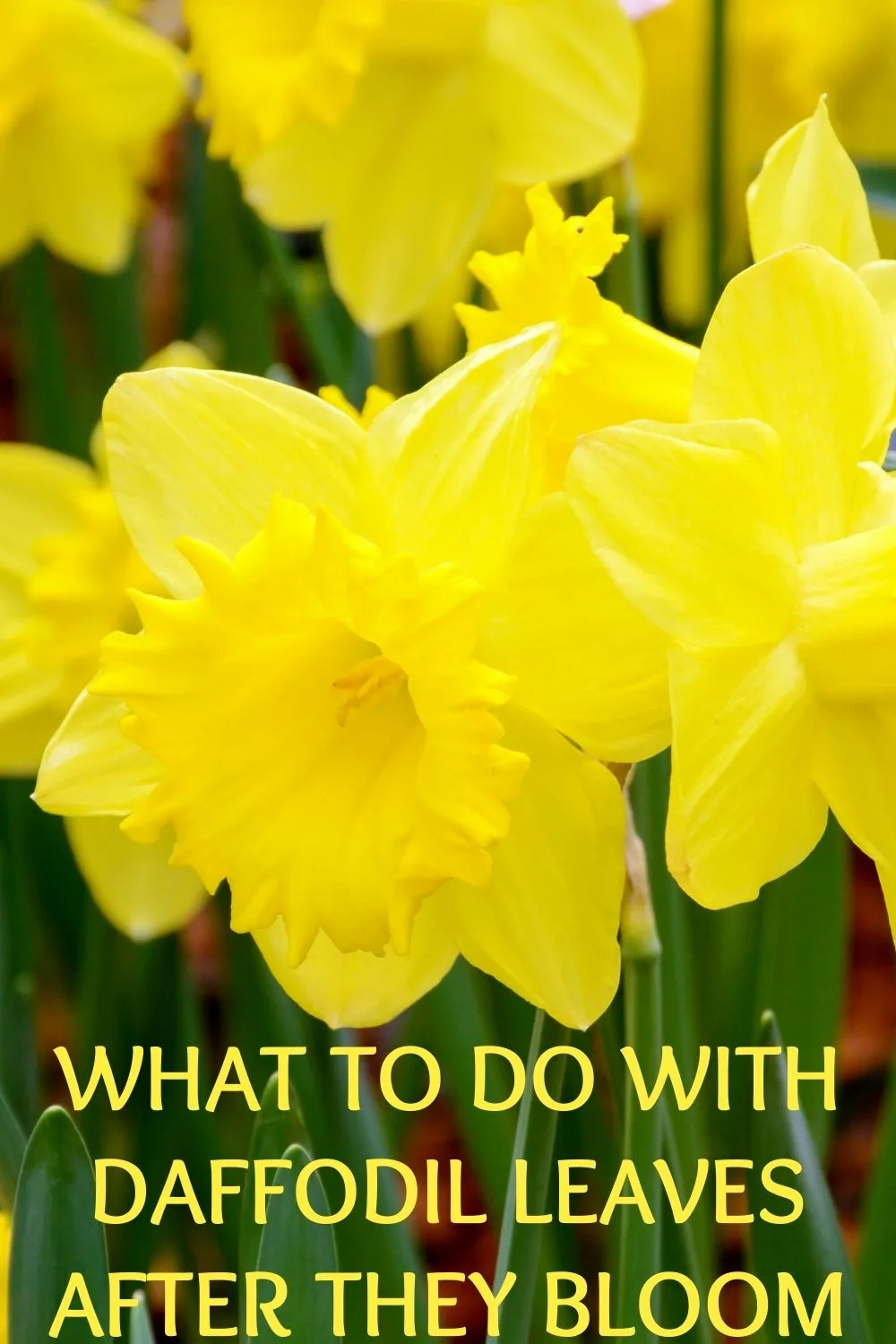Daffodils are synonymous with spring, and there are so many things you can do with this beautiful plant to keep it healthy and strong season after season. It all begins with knowing how to care for it properly. They produce beautiful, usually yellow blooms. Some types can have orange or white blooms, as well. Most daffodil varieties do best in hardiness zones 4-9, but there are varieties that can stretch beyond to other zones. Make sure the variety you plant is right for your area’s climate.
These plants will self-propagate, forming new bulbs under the main parent bulb. You can help them along by dividing the new bulbs every few years. But what about the foliage of the daffodil? There are also things you can do with the leaves after they bloom and after they die off. Are you asking yourself what to do with daffodil leaves? I have just the answers you need.

What are Daffodils?

First, let’s cover the basics. Daffodils (Narcissus spp.) are a beautiful flower that is often known for heralding in the season of spring! Daffodil is the common name for all members of the genus Narcissus. Depending on who you ask, there are between 40 and 200 different species of daffodil and cultivars.
A spot with full sun is the best place for planting your daffodils and the narcissus bulb will grow in seeking that sunlight for the health of the plant. The first thing you will see in the garden bed is that little bit of green and you’ll know your pretty flowers will be on the way soon.
They are perennial bulbs that should return each year with additional blooms. In the best growing conditions, they can last for many years, returning every spring. Some of the daffodil bulbs will die off but new bulbs will grow in, continuing the life of the plant. But what about the daffodil leaves?
Related: free printable daffodils coloring pages.
Daffodil leaves are the green part of the plant that grows from the stalk. They serve an important function for the daffodils because they allow the plant to soak in sun, which gives the plant nutrients. This is essential for the bulbs to grow beautiful and strong. And what you might not know is that these leaves continue working to help produce a strong growing season the following year. In early spring, the following spring, the bulbs will grow back again.
However, after flowering, the foliage will usually last for about 4-6 weeks (up to 2 months at most) and will then die off. Before it completely dies, it will get droopy, and floppy, and many people consider this unsightly and want to do something with it. They may cut them or tie them back with rubber bands, and some people even braid them.
However, it’s best to leave it alone until it has completely died off. It still provides a vital function to the plant, and it is needed. Much like how a rose has thorns, this is just part of having daffodils. Let’s talk about this in more detail.
Should you braid or tie off the daffodil foliage?
When the leaves become droopy and unsightly, this is when some people will try to remedy it by braiding them or tying them off, but we don’t recommend this because this prevents the leaves from being able to do their job and give adequate food supply to the bulbs.
If you want those beautiful full blooms, you need to deal with the leaves. If you braid them or tie them together, you reduce the parts of the leaves that get exposed to the sun, cutting off the food supply. Plus, it’s just a lot of work that’s not needed. You can spend your time and efforts on more important plant maintenance tasks.
What to Do with Daffodil Leaves
What can you do with daffodils when the flowers have died? Your heart might sink when your beautiful daffodils are dying. They lose their shape and start to droop and turn brown. They need to remain in place until they ripen and die on their own. This is important because they provide a vital function to feed the plant’s bulbs so they can continue to produce flowers next spring, too.
If you cut back or tie up the foliage, it can interfere with the bulbs’ ability to rebloom. You may see landscapers do this, but they are then paid to replant the next season, which accounts for that they kill off using this “tidying up” process. You can maintain the new growth in the next season by not doing this.
However, if you don’t like the unsightly look of the dead and dying leaves, you can disguise them in other nearby plants. Some good plants to consider for this are daylilies, hosta, bee balm, peonies, and poppies. You can simply tuck the dying foliage behind and around the other plants and you won’t notice it as much. The best time to clean up this foliage is when it is already starting to brown and die off on its own.
How to care for daffodil bulbs

The daffodil plant has different parts – the root, the bulbs, the leaves, stems, and the flowers. The bulb is a very important part of the plant because this is where the food is stored, and food is essential to the growth of the daffodil now and in future seasons.
Daffodil bulbs care is not overly complex. Small bulbs will start to come up first in early spring. And in some cases, if there are unusually warm temperatures, you may even start to see them too early. If this happens and then the weather goes cold again, you should do what you can to help keep them warm and protected until the cold weather clears for good.
You can feed your daffodil bulbs in the early spring with a liquid fish emulsion fertilizer at the first sign of foliage. Some people also use a small bit of granular food in the soil, but you must be careful not to overdo it and burn the bulbs. If you use it, be sure to water it well after.
When to remove leaves or bulbs
There is an exception to our advice when it comes to removing leaves and bulbs from your daffodils. If they are diseased, then you do need to remove them. Sometimes you can catch diseased leaves or bulbs early and just snip them off before they spread to the whole daffodil patch.
FAQs about Daffodils after Flowering
Here are some commonly asked questions about what to do with daffodils after flowering.
How do you go about cutting back daffodil leaves?
After daffodils bloom, they will be beautiful for a time and then the leaves will start to die off. There is no need to cut them back at all, and we’ve discussed above why you may opt to leave them be. However, if you are going to cut them, just cut some of them back to about 5 inches or so when the tips start to turn yellow. This gets rid of the dead leaves but still leaves some for next season’s regrowth.
When do you cut daffodils?
Daffodils will continue to grow long after the flowers have finished blooming and it’s important that you understand when and how you should cut the daffodils for optimal health and growth of the plant. Deadheading your daffodils is not always needed but you may want to because of:
- The seed pods (only some varieties have the seed pod)
- To conserve bulb energy
- Due to aesthetic reasons
Why do daffodil leaves turn yellow?
The leaves on daffodils will turn yellow in a few weeks after the plant blooms. This is a normal part of the process for daffodils, and it indicates the leaves have absorbed enough sunlight to create energy for the production of the growth of the bulbs. Once they’ve done their job for the season, the leaves will die off.
How long does it take for the leaves to turn yellow?
Usually, it takes the foliage up to two months to turn yellow. This is how long it takes the bulbs to get sugar from the leaves absorbing sunlight. This is essential to growth. The daffodil foliage manufactures food for great flowers, including next year’s flower buds.
How often should you water your daffodil?
You should not overwater your daffodil. Watering is recommended only when the soil feels dry if your daffodils are in a pot. If they are outside, they shouldn’t need much watering unless there has been little to no rainfall and the soil is very dry. You should water daffodils regularly if there is no rain, but have well-draining soil. Keep an eye on your spring garden and supplement water, if needed. But don’t overwater or allow water to pool up in the garden because this can lead to root rot.
What to Do with Daffodil Leaves – Conclusion
Cutting back daffodil leaves does not have to be a daunting task. It’s simple once you learn how to do it and do it correctly. This will allow you to prune your daffodils and cut back the dying leaves as needed. With the right care and attention, you can have beautiful blooms year after year. The daffodil is a good flower to self-propagate, essentially spreading itself for free. This makes it a good choice for your flower gardens or for landscaping around the property.
There’s not a lot you have to do for your daffodils aside from the usual, but it can help to be sure there is adequate sun and partial shade when needed, that your plants get enough water and that you fertilize if and when it is needed.
Some people braid the leaves, but we don’t recommend this method because you need to allow the leaves to do their job for as long as it takes each season for the bulbs to be healthy and strong. Once they have completed this, they will start to die off, and that’s when you can remove them. Do you now feel more comfortable about what to do with your daffodil leaves after they start to die?





 ?. ts.dhung.
?. ts.dhung.
